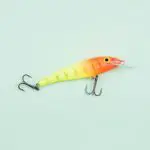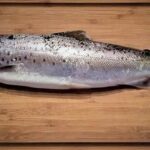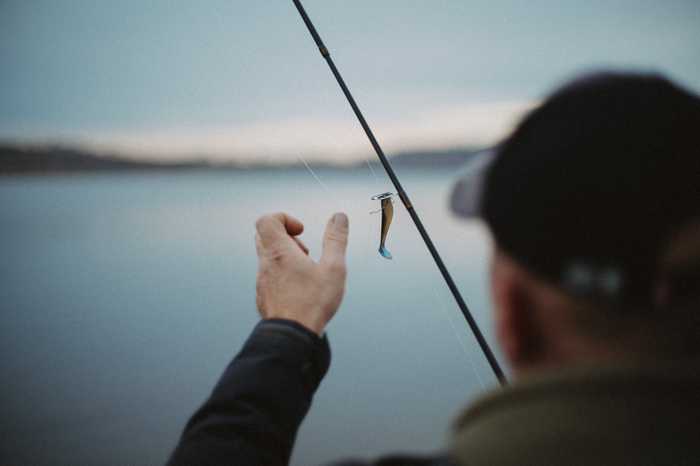Yes, trout are considered relatively easy to catch, especially compared to other game fish. This is due in part to their abundance in many areas, as well as their willingness to bite at baited hooks. Additionally, hatchery-raised trout are often even easier to catch than wild fish, as they are used to being fed by humans and thus more likely to strike at a lure or bait.
Do trout go deep?
As the weather starts to warm up in the spring, lake trout will be right up at the surface. But as the water temperature rises, they’ll begin to go deeper. Here’s a look at how deep they might go at different times of year.
In early spring, when the water is still cool, lake trout will be found near the surface. As the water warms up, they’ll start to head down to cooler depths. By summer, they may be found anywhere from 20 feet down to 100 feet or more. In fall and winter, when the water begins to cool off again, they’ll move back up towards the surface once more.
So why do lake trout change depth depending on the season? It all has to do with temperature. Trout are cold-blooded creatures, so their body temperature changes along with their surroundings. In general, they prefer waters that are between 50 and 60 degrees Fahrenheit – though some can tolerate temperatures outside of that range for short periods of time.
Which trout is hardest to catch?
There’s no easy answer when it comes to the hardest fish to catch, but Brown Trout are definitely up there. These fish are revered by fly fishing enthusiasts for their fighting abilities and are considered some of the best pound-for-pound freshwater fish out there.
Although they can be caught with a variety of methods, they often require more skill and patience to land than other trout species. If you’re looking for a challenge, then targeting Brown Trout is certainly one way to go about it.
What attracts trout the most?
There are a few different things that can attract trout, including old school nightcrawlers, human foods like marshmallows or kernels of sweet corn, and artificial dough bait. In general, trout seem to be most attracted to whatever smells the strongest – so if you’re using something like cheese or marshmallows, make sure they’re fresh and well-packaged so the scent is at its strongest.
Why are trout not biting?
There are several reasons why trout may not bite, even when they’re stocked in a body of water. They could be experiencing transport stress, changes in feeding habits, or bait aversion.
Additionally, barometric pressure and water temperature shocks can also impact their activity levels. In any case, it’s important to understand the various factors that can affect trout so you can better determine why they’re not biting.
How far should trout be from the bottom for ice fishing?
Rainbow trout are generally most active near the bottom of lakes, so when ice fishing, you should aim to have your bait at or near the bottom. However, every lake is different, so it’s important to pay attention to where the fish are biting. If you’re not getting bites, try moving your bait up or down in the water column until you find where the fish are feeding.

How deep should I fish for trout?
Trout can be found in a variety of depths, depending on the time of year. In winter, they will generally be found between 10 feet and the surface. In mid-spring, they will be between 35 and 45 feet deep. Late spring sees them moving to deeper waters, between 50 and 65 feet deep. And in summer, they will often be found at the 53 degree thermal layer.
Depth finders can be a helpful tool in finding trout, as they allow you to see exactly how deep the water is where you are fishing. This way, you can ensure that your lure or bait is at the right depth to attract trout.
What is the easiest trout to catch?
Rainbow trout are probably the most common and easiest to catch of all trout. They are stocked in many lakes and rivers and eat a wide variety of both baits and lures.
A spinnerbait is any of a family of fishing lures that get their name from one or more metal blades shaped so as to spin like a propeller when the lure is in motion, creating varying degrees of flash and vibration that mimic small fish or other prey. Spinnerbaits are also very popular among fly fishermen.
How deep should a trout stream be?
Trout streams can vary in depth, but there are some general guidelines you can follow. In the winter, fish your lure or bait between 10 feet and the surface. In mid-spring, fish between 35 and 45 feet deep. In late spring, fish between 50 and 65 feet deep.
And in the summer, fish at the 53 degree thermal layer. By following these tips, you should be able to find trout in most trout streams.
What is the most common trout to catch?
Of all the trout species that anglers might encounter while fishing, rainbow trout are by far the most common. Native to streams and lakes on the west coast of North America, these adaptable fish are now found throughout the continent thanks to stocking efforts by fisheries management agencies.
Rainbow trout are popular with both novice and experienced anglers alike because they provide good sport when hooked. They can be caught using a variety of methods, including bait fishing, fly fishing, and lure casting.
Because they are relatively easy to catch, rainbows are often used as hatchery fish – meaning they are bred in captivity and then released into waterways where they will help maintain populations of other trout species.
While rainbows can grow quite large (some specimens have been known to reach over 30 pounds), the average size is much smaller – making them an ideal target for those looking for a fun day out on the water.
What is the secret to catching trout?
The secret to catching trout is understanding their behavior and habitat. Trout are cold-water fish, so they prefer cooler temperatures. They also like areas with lots of vegetation, rocks, and other cover. Understanding where trout are likely to be found will help you have more success in your fishing trips.
When it comes to bait, try using live insects or small lures that imitate them. shiny objects can also attract trout, so don’t hesitate to experiment with different types of lure until you find something that works well. Pay attention to the water conditions and time of day when you’re out fishing – these can all affect where the trout will be and what they’ll be biting on.
Are trout easy to catch?
Yes, trout are easy to catch, especially hatchery fish. They are one of the top five game fishes in North America and their mild, nut-like taste is very good. The skin is also tender and flaky.
How deep should you fish for trout?
Trout are a popular target for anglers, and knowing how deep to fish for them can be the key to success. In winter, trout can be found between 10 feet and the surface. In mid-spring, they move to deeper waters, between 35 and 45 feet deep.
Late spring sees them moving to even deeper waters, between 50 and 65 feet deep. And in summer, they congregate at the 53 degree thermal layer. So no matter what time of year it is, there are trout to be found at different depths.
Is it difficult to catch trout?
No, it is not difficult to catch trout. In fact, many people enjoy trout fishing because it provides a challenge. However, there are some things you need to know in order to be successful.
Trout are often found in cold water, so you’ll need to use the proper gear. A good quality rod and reel are essential, as well as bait that is designed for trout fishing. If you’re using live bait, make sure it’s fresh and lively – otherwise, the fish will simply ignore it.
Once you’ve got your gear sorted out, the next step is finding a good spot to fish. Trout tend to congregate in areas with lots of cover, so look for spots where there are rocks or logs that provide shelter from the sun and predators. Once you’ve found a likely-looking spot, cast your line out and wait patiently for a bite.







